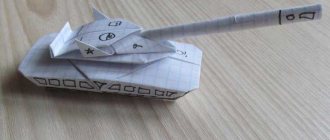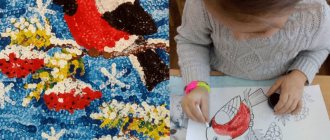“Local history in preschool age” consultation on the topic
"Local history in preschool age"
“Like a small tree that barely rises above the ground, a caring gardener strengthens the root, on the power of which the life of the plant depends for several decades,
so the teacher should take care of
nurturing in your children a feeling of boundless love for the Motherland.”
V. A. Sukhomlinsky
The existence and development of any historical community of people is based on a spiritual core, which is based on a sense of patriotism, a sense of love, respect for ancestors, and duty to the Fatherland.
An analysis of the sources (reasons) of patriotism shown by Russians confirms that the fundamental basis of their patriotic actions and deeds is the feeling of the Motherland, the consciousness of duty to it and responsibility for its fate. A person’s patriotic behavior becomes possible only in those cases when he is deeply aware of the blood connection with his Fatherland, as a result of which a specific mental state is born in his inner world, a peculiar patriotic mood, established in everyday language as a feeling of love for the Motherland, the Fatherland.
The formation of attitudes towards the country and the state begins from childhood. Therefore, one of the main tasks of preschool educational institutions is patriotic education.
Local history, better than other branches of knowledge, contributes to the education of patriotism, love for the native land, and the formation of public consciousness.
What is local history?
Local history is a body of knowledge about the history, economy, nature, life, and culture of a particular region. This is the legacy left to us by our ancestors. This is a living legend and grandmother's stories, the customs of the native land and the wealth of mineral resources, fields, forests, labor achievements and military accomplishments of fathers and grandfathers. This is the experience of economic development of the region and its age-old culture. This is the very inheritance that we must not only use for its intended purpose in life, but also protect, develop and distribute among descendants.
When introducing children to their native land, it is necessary to take into account that the information given by the teacher should evoke in children not only positive feelings and emotions, but also a desire for activity. This could be a child’s desire to draw what he just heard about, tell his parents or friends what he learned from the teacher, plant flowers near the house to make the yard even more beautiful, etc. The teacher must teach preschoolers to notice the positive things around that are created by the hands of people, to admire this work, to appreciate and take care of what surrounds them. Familiarization of preschoolers with their native land is part of a holistic educational process, taking into account the principle of a gradual transition from what is closer to the child, personally significant, to less close - cultural and historical facts.
The purpose of local history work with preschool children is to form in pupils a holistic idea of their native land, to awaken in them a love for their native nature, for the village in which we live, to help them understand the importance of their native land in the life of a large country, the role of each resident in life of your village, region, and, therefore, the country.
Objectives of local history:
1. Formation of an idea of the Motherland as the place where a person was born and where he lives.
2. Cultivating a sense of affection for one’s small homeland, pride in it, admiration for its beauty.
3. Development in preschoolers of the ability to emotionally and aesthetically perceive the world around them.
4. Fostering the need to learn about the cultural and natural values of the native land, to cherish and protect them.
5. Fostering respect for working people and famous fellow countrymen.
6. Expanding children's horizons based on material accessible to their understanding.
Local history activities as a means of introducing children to the culture of their native land can develop in a number of directions:
— Historical local history
- Naturally - scientific local history (geographical, environmental, biological, etc.).
— Ethnocultural and sociological-demographic local history (folklore, artistic, literary, etc.)
— Tourist and local history activities (local history research during walks, hiking trips).
— Museum local history (study of the native land on the basis of the local history museum)
— Excursion local history (studying the native land during preparation and conduct of excursions)
— Family local history.
The forms and methods of work in the field of local history are varied:
This is a joint directly organized educational activity, including different types of activities based on a single content;
Conversations, which are used as a verbal method in the classroom and as an independent form of working with children on various topics;
Excursions that introduce children to the social and cultural diversity of their native village.
Holidays and entertainment - where children get acquainted with the culture and traditions of the people inhabiting their native land.
Walking, traveling, hiking - these forms are indispensable in local history work. Cultivating love for one’s native land is impossible without communicating with nature and immersing oneself in its world.
A significant method in the work is the project method. Local history projects allow not only to form ideas about the small and large Motherland, but also contribute to the development of independent thinking, determination, perseverance, creativity, help the child to develop confidence in their own abilities, and most importantly, develop the ability to interact with peers and adults.
A special place is occupied by local history games, which provide an opportunity to introduce a child to history, archaeology, geography, and nature. For example:
"Find the coat of arms"
Goal: to teach to recognize the coat of arms of a village (district, district); develop fine motor skills, attention, memory; cultivate a sense of pride for your small homeland.
Progress of the game: The child is asked to find the coat of arms and tell what it means.
“Collect a coat of arms, a flag”
Goal: consolidate knowledge about symbolism; develop fine motor skills;
How to play: Offer to collect a picture. Tell us about the symbol you created.
"Guess the national costume"
Goal: To introduce children to the knowledge of the national costume and national costumes of the peoples of their native land. To consolidate knowledge about the features of the costume and its elements. Teach children to find similarities and differences.
Progress of the game: Cards with images of people in national costumes are laid out in front of the child. Among all those offered, the child must choose the named national costume. After the child has guessed the national costume, you can ask him a few questions: how did you recognize the national costume? What similarities and differences are there between the costumes?
"Red Light".
Goal: to consolidate knowledge about the plants and animals of the native land listed in the Red Book.
Progress of the game: Children choose plants and animals that are in danger from the entire flora and fauna, and tell about them.
"Do you know?"
Goal: introduce children to famous people of their native land.
Progress of the game: The teacher shows portraits of famous compatriots, invites the children to name the one depicted in the portrait and tell what he is famous for.
Practice shows that spatial local history concepts in preschoolers are formed faster than temporal ones. Therefore, it is necessary to organize an appropriate subject-spatial environment, the so-called centers of local history, where children could, in conditions of daily free access, replenish knowledge about their native land. Work at the local history center develops speech, thinking, and imagination in preschoolers, broadens their horizons, promotes the moral development of personality, expands the area of social and moral orientations and feelings of children, awakening love for their native village, region, and country.
The material offered to children in the centers must necessarily change depending on the thematic blocks being studied.
The content of materials in the centers depends on the age of the children.
The federal state educational standard for preschool education requires the search and implementation of new approaches to raising and teaching children. One of these approaches is the informatization of preschool education. Informatization of education opens up new opportunities for teachers to widely introduce into teaching practice new options for working on local history activities with preschool children, such as virtual excursions. They make it possible to diversify and make the educational process interesting, and therefore more effective, help to implement the principles of clarity and scientific teaching, and contribute to the development of observation and independent work skills in preschoolers.
A virtual tour is a software and information product in the form of video, audio and graphic materials, designed for an integrated presentation of information. It has a number of advantages over traditional excursions: Weather conditions do not interfere with the implementation of the planned plan and conduct an excursion on the chosen topic. Virtual excursions have no boundaries, which allows you to visit various places in the village or native land without leaving the kindergarten building; makes it possible to repeatedly repeat the material at the desired pace; improves the quality of the educational process.
Recently, such an element as a mini-museum has increasingly begun to appear in the developing environment of kindergartens. As part of patriotic education, a mini-museum is a necessary part of the development environment. The purpose of the created mini-museums of local history in preschool educational institutions is to involve children in activities and communication, and to influence their emotional sphere. Working with a mini-museum contributes to the cultivation of love for the small Motherland and Fatherland, the development of cognitive interest, aesthetic feelings, speech, labor, visual skills, and creative abilities.
Creating a mini-museum in a group is of great importance for cooperation between a preschool institution and a family. Harmoniously and correctly organized by the preschool educational institution staff, parents and children, mini-museums not only become a source of pride for the preschool institution, but also bring tangible results in the field of upbringing and education of children, help broaden the horizons of both the child and the adult, and improve education and good manners.
For the formation of cognitive activity of preschoolers in local history activities, such an area as collecting is of interest. Collecting is one of the oldest hobbies of man, which has always been associated with collecting objects that have no direct practical use, but provoke thought. Collecting begins to introduce a child to the world of small secrets and their discoveries.
Collecting and classifying various objects broadens children's horizons and also develops their cognitive activity. In the process of collecting, children accumulate knowledge, then the information is systematized and a readiness to understand the world around them is formed. Items from the collections add originality to gaming, speech and artistic creativity and activate existing knowledge. Collecting develops all mental processes: attention, memory, the ability to observe, compare, analyze, generalize, highlight the main thing, combine.
Thus, the variety of forms, means, methods and techniques of local history activities influence the level of knowledge about phenomena and objects of the surrounding world, a positive emotional and aesthetic attitude towards them, and most importantly, the content and quality of children’s views on cultural and historical values, on familiarization with culture of the native land.
When starting the work of instilling in preschoolers a love for their native land, the teacher, first of all, must know it well himself, he must think through what is appropriate to show and tell the children about, especially highlighting what is characteristic only for this area, what is only Here.
We must remember that familiarization with the topic should be systematic, unobtrusive, based on the principle of complication and recognition of the material. At the same time, we must not forget that preschoolers do not yet master many concepts. Words and expressions familiar to adults may not be familiar to them, so they need to be deciphered in an accessible form.
Local history in preschool educational institutions is one of the sources of enriching children with knowledge about their native land, instilling love for it and the formation of moral qualities, revealing the connections of their native land with the Motherland.
Every moment of acquaintance with the native land should be permeated with instilling respect for a person - a worker, a defender, a worthy citizen of his Fatherland.
Used Books:
1. Novitskaya M.Yu. Heritage. Patriotic education in kindergarten, 2003.
2. Petrova V.I. Moral education in kindergarten /Program and methodological recommendations/, 2006.
3. “Local history education of preschool children” Practical guide / Ed. L. N. Prokhorova. – 2nd ed., Spanish. and additional – M. 2004
4. Kovaleva G.A. “Education of a little citizen”, M. 2004.
5. “Introducing children to the origins of Russian folk culture,” St. Petersburg, 2000.
6. Danilina G. N. “For preschoolers - about the history and culture of Russia”: A manual for the implementation of the program “Patriotic education of citizens of the Russian Federation,” M. 2003
7. Aleshina N.V. Familiarization of preschoolers with the environment and social reality, M. 2003.
8. Barannikova O. N. Lessons on citizenship and patriotism in kindergarten, M. 2007.
9. Komratova N. G., Gribova L. F. Patriotic education of children 6-7 years old. M. 2007



